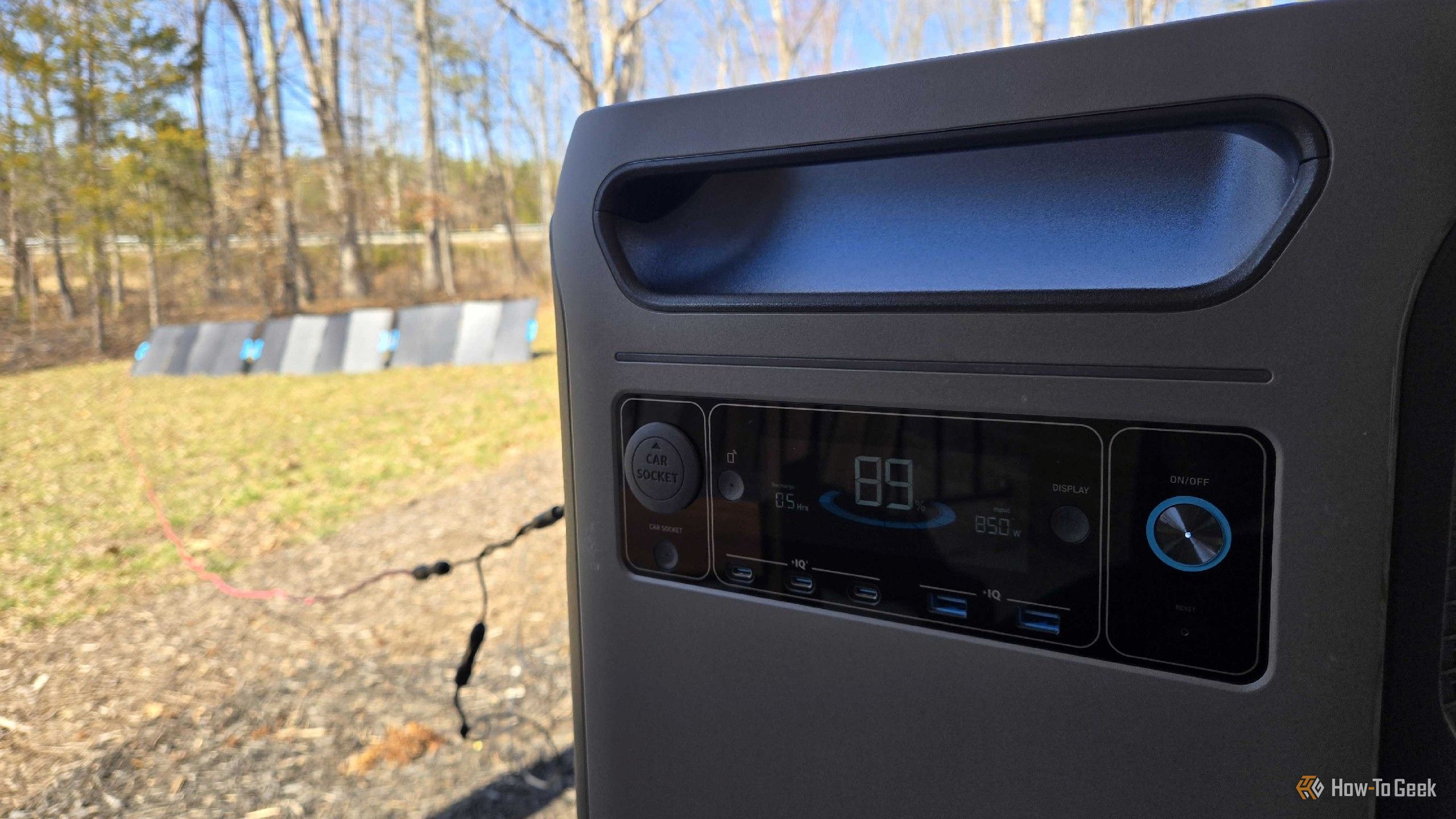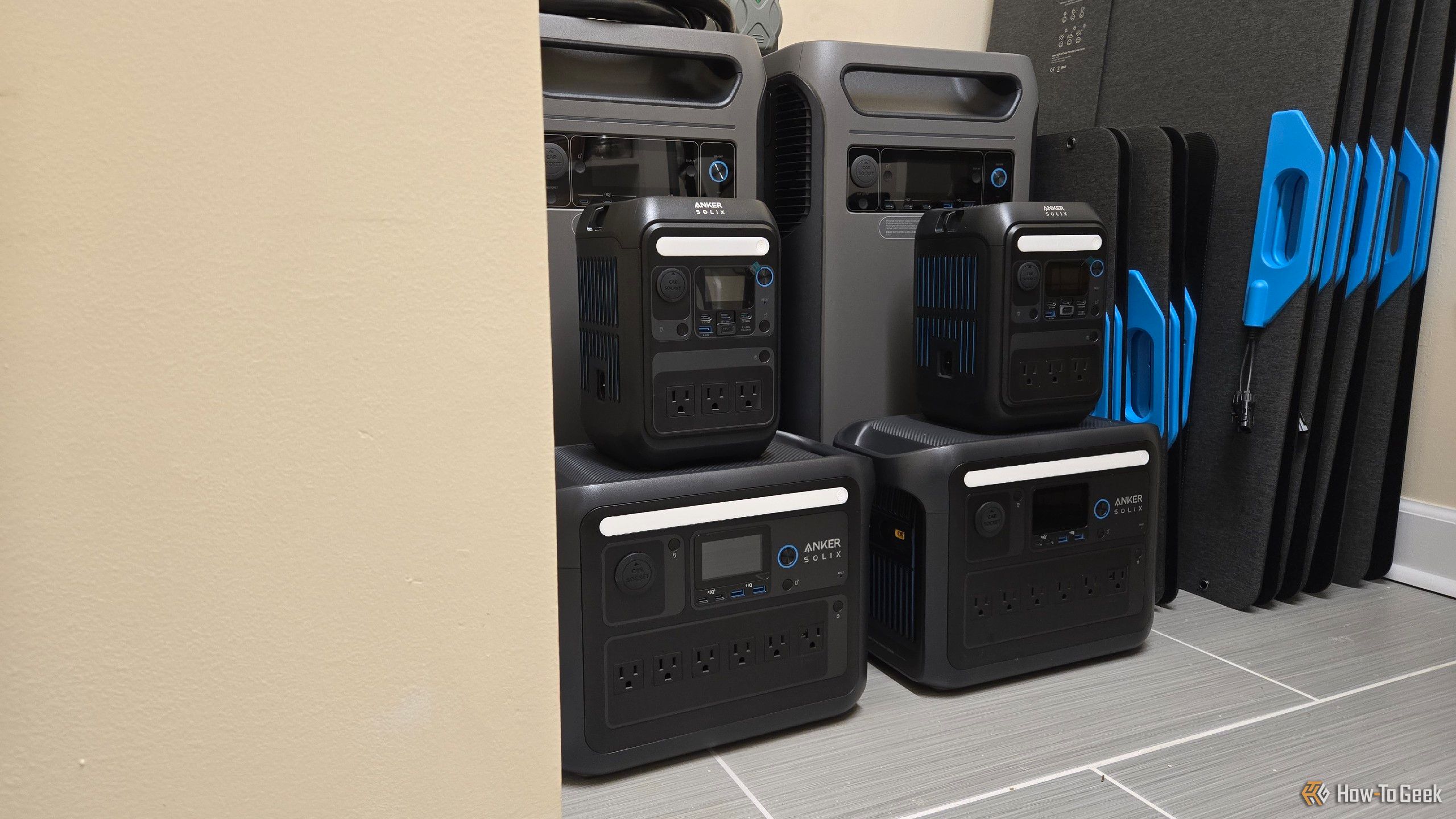Portable power stations are large batteries with power outlets that let you power all of your usual tech. Some can now even power your house. I’ve become enamored with these little devices. Let me tell you why.
5
Charge Quickly From a Solar Panel
I don’t know if solar power will ever stop feeling like magic. I have solar panels on my roof, and I monitor solar power production using a smartphone app. That experience is primarily passive. I don’t do anything other than receive a smaller electric bill each month.
Portable solar panels are more hands-on. I have a foldable Anker 100W solar panel that I plug into my Anker C300 portable power station (is the AC version of the Anker C300 DC). I can place both outside on the back deck, and 1–3 hours later, my power station is fully charged.
I have bigger power stations and bigger solar panels. It’s quite impressive to plug multiple 400W panels into an Anker F3800 Plus and watch it pull in around a kilowatt of power.
4
There Are So Many Other Ways To Recharge
I enjoy pulling out my portable solar panels, but that is only one way to charge these units. When the power’s on, I just plug them into a wall. But if the power’s out, and it’s a cloudy day, I have various backup plans.
For starters, I have a car charger I can plug into the 12V outlet in my car. That’s not enough juice for the bigger batteries, but it can top up the smaller ones in a few hours.
I bought a Renology 1000W pure sine wave inverter that can be used to charge power stations using my car’s 12V battery. Since I drive an EV, this allows me to convert my EV’s 64kW battery (which supplies power to the 12V battery) into additional backup storage for my home. This can be risky if you only have one car in an emergency, but my wife and I have two, so one can still be left fully charged if we need to hit the road.
If our lights are out, but extended family or friends still have power, we can simply take our power station to their house to charge. We don’t have a gas generator, but people that do can use one to recharge their power stations. This allows them to stretch a tank of gas much longer than running everything from the gas generator directly.
3
Place Power Outlets Anywhere in the House
A home backup battery has two primary uses. One is home backup power. The other is saving money on your electric bill by shifting when you pull power from the grid. The downside is they’re attached to your home and aren’t good for much else.
Portable power stations extend where power outlets are available inside our home. Some of our favorite places to use devices are far from wall outlets. In the past, we had to use extra-large charging cables or pull out extension cords to charge while sitting at the couch or dining table. Now I can just place a portable power station on or under either table. My wife uses one while working from the living room, and my kids spend less time lying around on the floor next to the wall.
This is one of the same things I love about portable power banks in general, which I have also started using around the house.

Related
Why I Leave Phone Power Banks In Every Room of My Home
Portable power isn’t just for when you’re out and about.
2
Take Power Inside Any Car and Outdoors
Newer EVs often come with AC outlets somewhere inside the car for charging devices. Mine doesn’t have this feature, and now I have less need for it. Our Anker SOLIX easily sits in the backseat or on the floor within easy each of whomever wants to charge. It’s a big help on family road trips, and it provides peace of mind for remote workers who sometimes need to power a laptop and work from a car. I can grab an Anker SOLIX C1000 instead if I think we’re really going to need the extra power.
Many of these power stations are advertised as great power sources for campers and RVs. That’s true, but that’s just the beginning. We can now hold outdoor events that require power. I have everything I need to set up a projector outside and watch a movie out on the lawn. My wife teaches dance, and we have the capability to set up stage equipment outside. We haven’t yet, but the option is there. These power stations can silently power lights and sound in a way a gas generator can not.
-
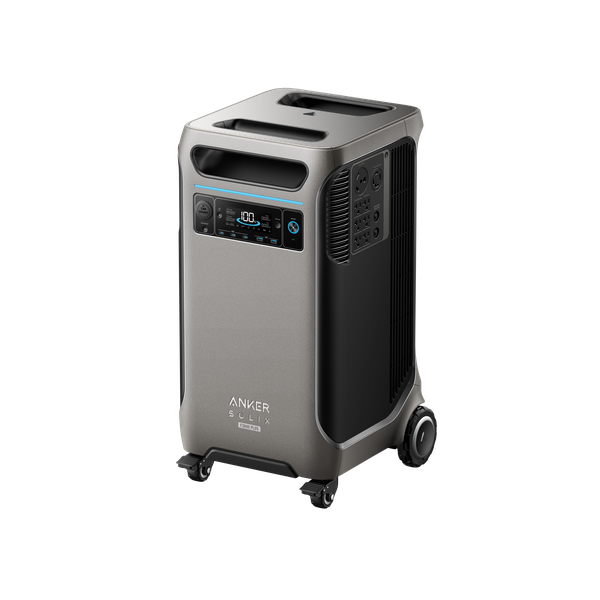
- Brand
-
Anker
- Dimensions
-
27.6×10.3×15.6
- Weight
-
136.7lb/62kg
- AC Output ports
-
One NEMA TT-30R, One NEMA L14-30R, Six NEMA 5-20R
- AC Input rating
-
1800W
- DC Output ports
-
120W, 12V/10A
The Anker F3800 Plus is an updated version of Anker’s F3800 solar generator, offering the same 3.84kWh capacity and 6000W output. This model comes with improved charging, with a new max solar input of 3200W and 165V, along with support for 240V from a gas generator.
-
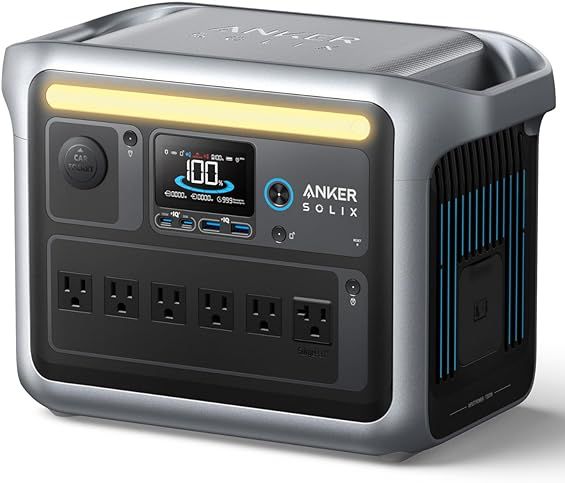
- Brand
-
Anker
- Dimensions
-
14.8×8.07×10.5 in
- Weight
-
28.4 lb
- AC Output ports
-
Six / 1800W Pure Sine Wave (2400W Surge)
- AC Input rating
-
1300W
- DC Output ports
-
120W, 12V/10A
The new Anker SOLIX C1000 is a compact yet powerful 1800W portable power station. It packs 11 different ports, 2400W AC power surge, built-in lighting, and more. Charge all your gear or be prepared for an emergency.
-
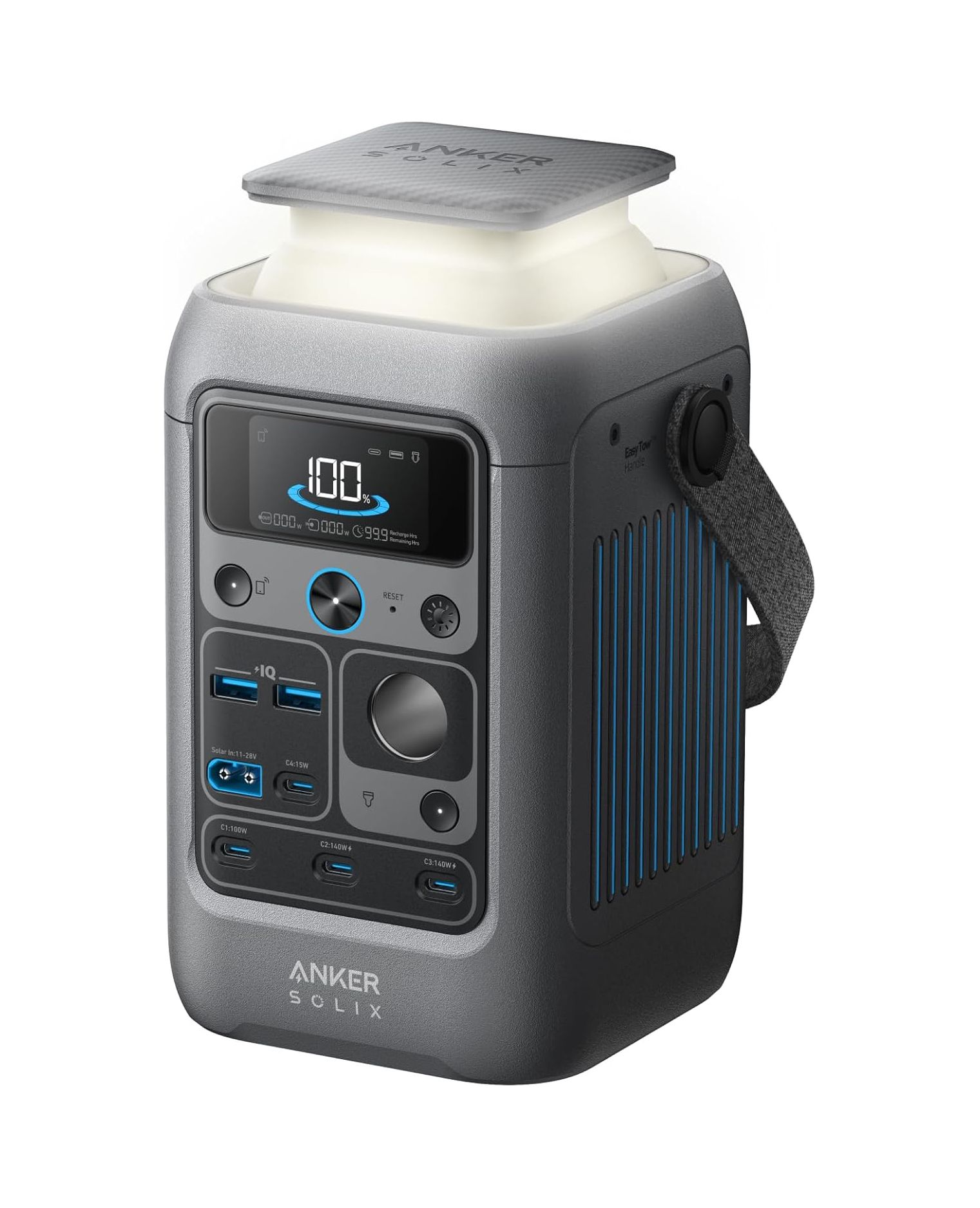
- Dimensions
-
4.9 × 4.7 × 7.9 in
- Weight
-
6.17 lbs
- DC Output ports
-
100W Car Socket
- Solar input rating
-
XT60 – 100W
- USB Ports
-
4 USB-C, 2 USB-A
- Battery type
-
LifePO4
The Anker SOLIX C300 DC is a versatile and portable power station with a 288Wh capacity and 300W output. It features multiple charging ports, including two 140W two-way USB-C ports, and can be recharged via an AC outlet, solar panel, or car charger. This makes it perfect for outdoor adventures, travel, and emergency backup power.
1
They Use Safer Batteries
Smaller battery banks use lithium-ion batteries, which can swell and catch fire. My portable power stations all use a safer battery chemistry than those within my smartphone or my electric car. It’s called lithium iron phosphate, or LiFePo4.
Lithium-ion batteries can suffer from what’s known as thermal runway. Once a fire starts, it can’t be put out until all the energy is expended. All firefighters can do is prevent the fire from spreading.
The LiFePo4 batteries in my power stations are much harder to catch on fire. Even in the event of failure, they’re more likely to release hot air or smoke than flames. This is what makes me feel safe keeping so many of them inside my home.
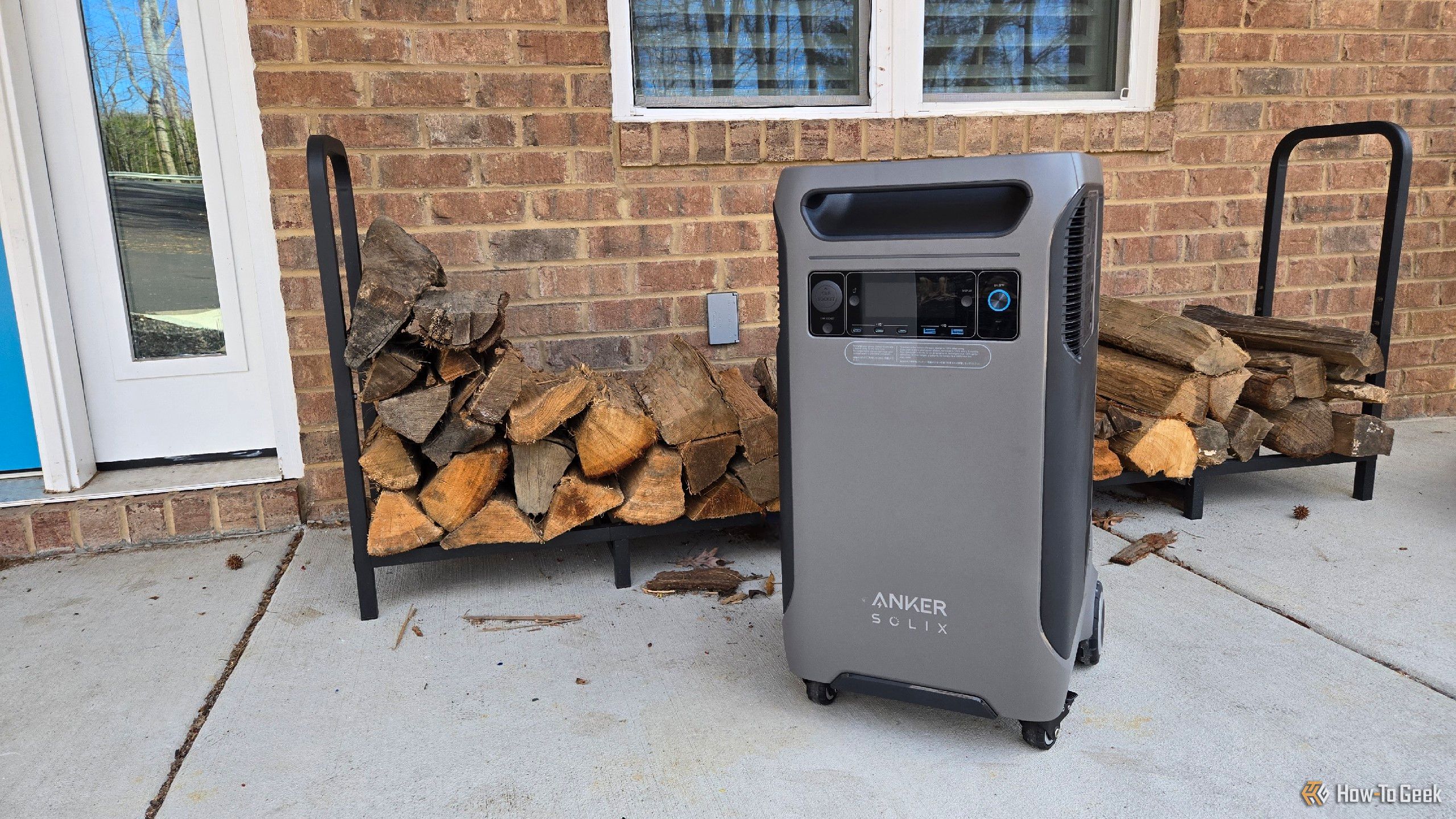
Related
Instead of a Powerwall, I Backed My Home Up With Tons of Solar Generators
It wasn’t cheap, but it was cheaper.
Is the risk zero? No—but it now feels comparable to that of a pressurized water heater, and virtually all homes in the US have one of those. I personally feel much more comfortable with these batteries than having a propane tank installed near my house for a generator, which is another reason why I backed my home up with batteries instead. Everyone’s free to calculate their own personal risk tolerance, and this type of battery puts me at ease.
Portable power stations are by no means perfect. Like many things that are small and easy to plug and play, they cost more than DIY solutions. They’re also not designed to be self-serviceable if anything goes wrong. And while they last a long time, they will eventually need to be replaced.
I can go on, but I love these power stations anyway. While so much technology feels superfluous and unnecessary, portable power stations have been genuinely life-changing.

